
We all know feathers are essential for a bird's ability to fly, but their importance goes far beyond just taking to the skies. These structures, which are lightweight yet highly intricate, carry out a remarkable array of essential tasks that aid in the survival and welfare of birds through various and enchanting means. Feathers serve many purposes in birds’ lives, from providing essential insulation to aiding in camouflage, attracting mates, and functioning as sensitive sensory tools.
This thedailyECO article explores seven key functions and benefits of feathers for birds, from insulation and camouflage to sensory perception and communication
Flight
Birds are the only creatures with feathers, and these structures make flight possible. A hollow base plugs into the skin, extending into a flexible shaft. From this shaft, branches spread out and connect through microscopic hooks, creating a surface that's both strong and flexible.
The wing has three main sets of flight feathers.
- The primaries, at the wingtip, power each stroke.
- The secondaries, along the forearm, provide lift.
- The tertiaries, at the shoulder, smooth the airflow. Together, they form a precise flight control system.
Birds also possess specific adaptations for flight control. The alula, a small group of feathers on the "thumb" of the wing, functions much like the slats on an airplane, preventing stalling at low speeds. Meanwhile, the tail feathers act as a rudder for steering and a brake for slowing down, while the smaller covert feathers create a smooth wing surface, similar to the overlapping tiles of a roof.
Furthermore, a bird's flight feathers are tailored to its specific flying style. Eagles, for example, utilize widely spread primary feathers for precise maneuvering. Hummingbirds, in contrast, have the unique ability to rotate their feathers, enabling them to fly backward. Owls have evolved serrated edges on their flight feathers for silent flight, crucial for hunting. And swifts can reshape their wings to execute incredibly fast turns.
These feathers require maintenance. Birds can repair minor damage by rezipping their feathers, but they must replace worn feathers through molting. This system has evolved over millions of years, making birds masters of the air.
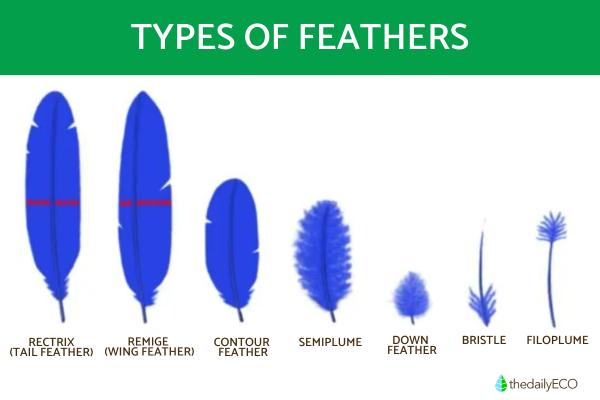
Insulation
Birds maintain a body temperature of 40°C (104°F) through a multilayered feather system.
- Down feathers form the base layer, trapping air near the skin. These minimal-shaft feathers create air pockets, functioning like high-performance insulation.
- Contour feathers create the outer shell, overlapping like shingles to block wind and water while trapping additional air.
- Between these layers, semiplume feathers provide extra insulation. Birds control these feathers through muscles, expanding them in cold weather and compressing them to release heat.
Chicks emerge with natal down, a specialized insulation that differs from adult down. As they grow, they develop adult feathers gradually, maintaining warmth during the transition. This complete system lets birds thrive from -60°C (-76°F) to 40°C (104°F), from polar regions to deserts.
Birds can adjust their insulation by moving these feathers, much like we adjust layers of clothing, but with more precision and effectiveness.

Communication
Birds use their feathers to communicate in sophisticated ways, influencing mate selection and social status. Their colors come from both pigments and structural effects:
- Melanin creates black and brown shades.
- Carotenoids (like in Northern Cardinals, Cardinalis cardinalis) produce reds.
- Porphyrins generate greens.
Structural colors cause iridescence in hummingbirds (Trochilidae) and make Blue Jays (Cyanocitta cristata) appear blue by reflecting and scattering light.
During breeding season, males often develop striking plumage and perform elaborate displays. Peacocks (Pavo cristatus) fan their shimmeringtail feathers, while birds-of-paradise (Paradisaeidae) use intricate feather arrangements to attract mates.
Some birds incorporate sound into their displays: Club-winged Manakins (Machaeropterus deliciosus) vibrate their wing feathers at 1,500 Hz, Common Snipe (Gallinago gallinago) produce winnowing noises in flight, and Palm Cockatoos (Probosciger aterrimus) use their crest feathers to amplify sound.
Over generations, sexual selection has refined these feather-based signals, shaping how birds attract mates, defend territory, and navigate social structures.
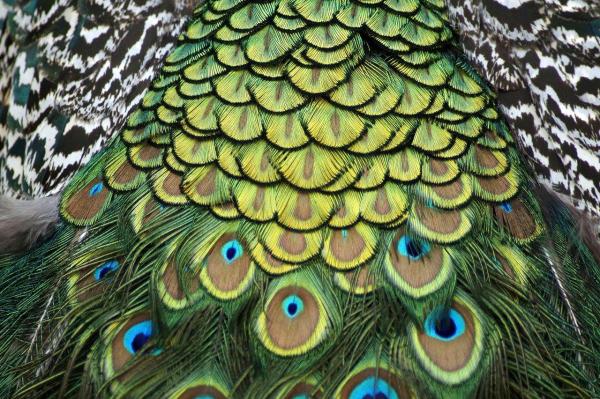
Protection
Feathers serve as an armor through multiple protective mechanisms.
The most visible is camouflage. Birds' feather patterns and colors help them blend with their environment. The Common Potoo (Nyctibius griseus) demonstrates this perfectly, its mottled gray-brown plumage matching tree bark so well that the bird appears to be part of the branch it perches on. Arctic Ptarmigan (Lagopus lagopus) even change their feather color seasonally, white in winter and brown in summer, to maintain camouflage year-round.
Beyond camouflage, feathers provide:
- Physical protection: contour feathers create a tough, flexible armor that cushions impacts and shields the skin from scratches. Desert birds' feathers protect against sand and sun, while waterbirds' feathers block harmful UV radiation.
- Warning signals: some birds, like the American Woodcock (Scolopax minor), flash bright patches of color when threatened, startling predators and buying time to escape. Others, like the Hoatzin (Opisthocomus hoazin), have evolved feathers that make them appear larger when threatened.
- Environmental defense: feathers create a barrier against rain, wind, and temperature extremes. Special oils from the uropygial gland waterproof feathers, while their structure helps shed dirt and parasites.
- Defensive displays: when threatened, birds like owls can puff their feathers to appear significantly larger. The Great Grey Owl (Strix nebulosa) can almost double its apparent size through this display.
Feathers help birds fly, but how do they eat, preen, and build nests? Discover the incredible versatility of another crucial bird feature, the beak, in our other article.

Feeding
Birds have evolved specialized feather adaptations that enhance their hunting and feeding abilities.
Around the beaks of many insectivorous birds, modified feathers called vibrissae act as sensory tools. These stiff, bristle-like feathers help detect prey by sensing air movements and vibrations. Nighthawks (Chordeiles minor) use these to catch flying insects with remarkable precision, especially during twilight hunting.
Owls represent perhaps the most sophisticated feeding adaptations in their feathers. Their wing feathers have evolved unique features:
- Leading edge serrations break up airflow
- Velvet-like surface texture absorbs sound
- Soft fringes on flight feathers eliminate wind noise
These adaptations let Great Horned Owls (Bubo virginianus) approach prey in near-perfect silence.
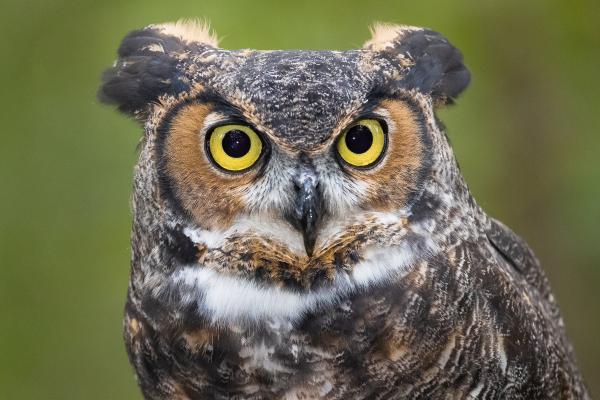
Sensory
Feathers are also sensitive tools that help birds perceive their world. Three main types of sensory feathers play distinct roles:
First, there are filoplumes. These tiny, hair-like feathers, scattered all over a bird's body, have enlarged nerve endings at their base, making them excellent mechanoreceptors. They provide crucial information, allowing birds to:
- Monitor their feather positions during flight, ensuring precise control.
- Detect even subtle shifts in air pressure, helping them adjust to changing winds.
- Feel the slightest movements within their own plumage, giving them a constant sense of their body's state.
Around the beak and face, some birds have specialized feathers called rictal bristles. These modified feathers act like sensitive whiskers, serving both protective and sensory functions. Nightjars and flycatchers, for example, use them to:
- "Feel" the vibrations of flying insects, making them effective aerial hunters.
- Protect their eyes as they snatch prey from the air.
- Enhance their awareness of nearby objects, which is especially important for birds hunting in low light.
Finally, some species have evolved specialized contour feathers that act like sensory tools. For example, woodcocks have sensitive facial feathers that help them detect earthworm movement underground. Kiwis, with their poor eyesight, use modified facial feathers to assist in finding food. And parrots have highly sensitive feathers around their beaks that are crucial for precise food handling.
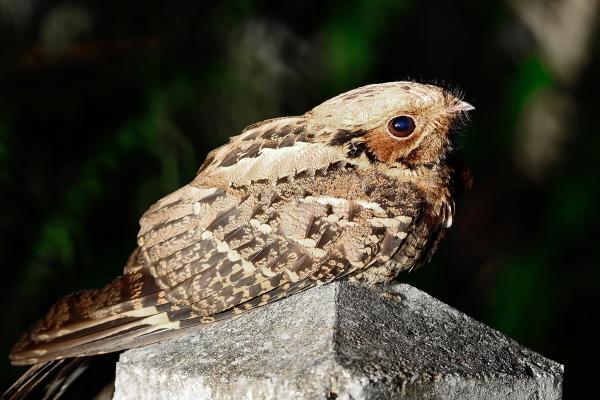
Buoyancy
Aquatic birds achieve buoyancy through a sophisticated system of waterproof feathers and trapped air. Their feathers create a dual-layer system:
The outer layer consists of tightly overlapping contour feathers coated with oil from the uropygial (preen) gland. This creates a waterproof barrier through an arrangement where each feather overlaps like shingles. When diving birds like cormorants (Phalacrocoracidae) want to sink, they can deliberately break this seal to release trapped air.
Under these waterproof contour feathers, a layer of down feathers traps air pockets next to the skin. This serves two crucial purposes:
- Provides insulation in cold water
- Creates buoyancy through trapped air bubbles
The preen gland produces oil rich in diester waxes, which birds carefully spread throughout their feathers during preening. This maintenance is crucial because without regular preening, the waterproofing system fails.
From delicate eggs to fledglings taking their first flight, witness the incredible journey of a bird's life cycle.
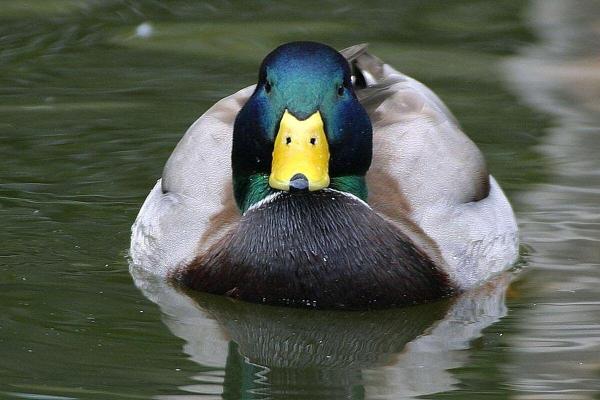
If you want to read similar articles to What Do Feathers Do? - 7 Functions & Benefits for Birds, we recommend you visit our Facts about animals category.
- Bosso, A., & Narosky, T. (2018). Birdwatcher's manual. Ecoval Editions.